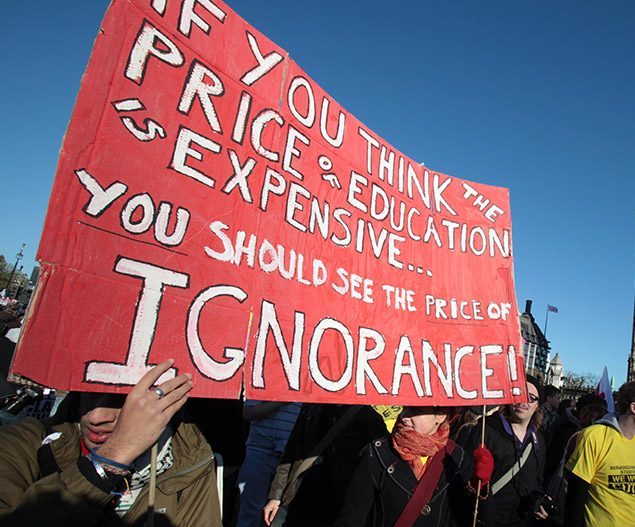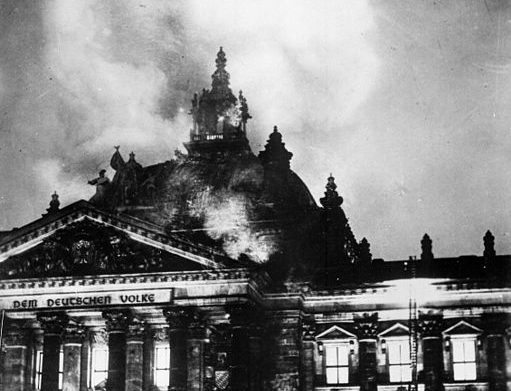Jaffa was wrong about the root of today's academic problems.
The Embers of the Reichstag

The cowardice of our faculty and administration continues unabated.
Jaffa’s 1989 lecture instantly brought back to me that moment in 1970—August 24, 1970—when four young men detonated a 2,000 pound bomb in front of Sterling Hall at the University of Wisconsin, Madison. Their target was the Army Mathematics Research Center. They managed to murder Robert Fassnacht, a 33-year-old physics post-doc pursuing research on superconductivity, injure several others, and destroy a lot of property, but the Army Mathematics Research Center itself was largely untouched.
The bombers scattered. Three of the four were eventually captured and convicted. The fourth, Leo Burt, fled to Canada and has never been found.
When Fassnacht was killed, I was about to start my senior year of high school in suburban Pittsburgh. The Kent State shootings, which left four people dead at the hands of the Ohio National Guard, had occurred four months earlier and had left me deeply unsettled. The anti-Vietnam protests had, up to that point, seemed mere theater: a game of taunting authorities. That those authorities might respond with bullets never crossed my mind, and for a few months I was, at least in spirit, radicalized. Then at the end of August, as news spread of the Wisconsin bombing, I was abruptly de-radicalized. The heedless killing of Robert Fassnacht made it clear to me that the leftist opponents of the war were certainly no better than their adversaries, and possibly much worse. And the worse soon followed in the form of the terror campaign waged by the Weather Underground and related groups.
Jaffa’s account of the pipe bomb that in February 1969 disfigured the 19-year-old secretary in the Political Science Department at Claremont touches other chords as well, but it took many more years for me to comprehend the “servility, vanity, lack of conviction—and plain cowardice” that Jaffa observed back then as characteristic of the faculty and administration. I was inexperienced, but not obtuse. The cowardice at Claremont in 1969 was plainly caused by fear of Black Panther-inspired violence, and Kingman Brewster’s preemptive surrender to black radicals at Yale in 1970 was part of a widening gyre of black intimidation of white college presidents.
The pattern was set early on. In 1963, Brewster had pressured the Yale Political Union to dis-invite Governor George Wallace because he feared Wallace’s presence would aggravate the New Haven black community. The April 1969 armed take-over at Cornell had already occurred many times over in the fears of many college administrators, who assumed correctly that black grievance had a subtext of ready resort to violence.
This fear never really receded. In 1990, Nicholas Haddad, a black nationalist undergraduate student at Wesleyan University, fire bombed the president’s office. This occurred in the midst of student protests about the university’s investments in South Africa and other minority complaints. Wesleyan president William Chace issued a public statement saying that the bombing was “a criminal act that has nothing to do with any policy of the institution,” but three days later a group calling itself STRIKE posted a letter claiming that they were responsible for the bombing, which they perpetrated as a protest “against the academic principles of this university and others.” Knowing that witnesses had seen two people running from the scene, the police investigation interrogated some black Wesleyan students. A few months later, Haddad, the primary perpetrator, was shot to death in a drug deal. Chace, however, found himself defending the university from charges of racism.
In his essay Jaffa moves with celerity from the resort to violence to the appeasers of the violent to the intellectual apologists for violence and irrationality to the moral relativism that underlies those justifications. And from there he reminds us of the fundamental truths first compromised and then vitiated by those temporizers with criminality and decadence.
Jaffa in 1989 wrote at a moment when the flames of revolt were banked but the philosophy of lawlessness in the name of liberation was still working itself out in the pronouncements of leftist ideologues on campus. Would he be surprised by the resurgence thirty years later of Marcusian liberators wearing black masks, carrying truncheons, and setting fires? Would it puzzle him to hear reason itself mocked as a tool of the white male oppressors, or to witness a U.S. Senator laud an accuser for “speaking your truth?”
Probably not. Perhaps the most surprising thing is that the Reichstag, some 85 years after it went up in flames, is still combustible. Why is there anything left to torch? Because we defenders of Western civilization have done better than we often suppose. Ours has been a quiet, largely uncelebrated success, burdened by steep regret over the irretrievable losses. But all is not lost. We have persistently rebuilt. To defend Western civilization against unending waves of barbarians unleashed by modernity is not, as Jaffa discovered, a pleasant task. It sometimes requires “putting down a colleague,” especially if the colleague is standing there with the gasoline can in one hand and the matches in the other. But that’s our job. I do it in memory of Robert Fassnacht.
The American Mind presents a range of perspectives. Views are writers’ own and do not necessarily represent those of The Claremont Institute.
The American Mind is a publication of the Claremont Institute, a non-profit 501(c)(3) organization, dedicated to restoring the principles of the American Founding to their rightful, preeminent authority in our national life. Interested in supporting our work? Gifts to the Claremont Institute are tax-deductible.
Our universities are being transformed into institutions of professional training and certification.
Our universities' loss of intelligent direction is a greater threat than their radicalization.
Colleges today encourage students to conflate youthful arrogance with high moral purpose.
Universities will continue as they are—unless the money stops flowing.
This week's feature is based on the following essay (downloadable as a PDF) written by Professor Harry V. Jaffa in 1989, which served as his farewell address to full-time faculty status at Claremont McKenna College. It remains an illuminating and prophetic statement in response to political correctness and the decay of higher education in contemporary America. The newly published book of his writings from which it is taken can be purchased at the link below.






